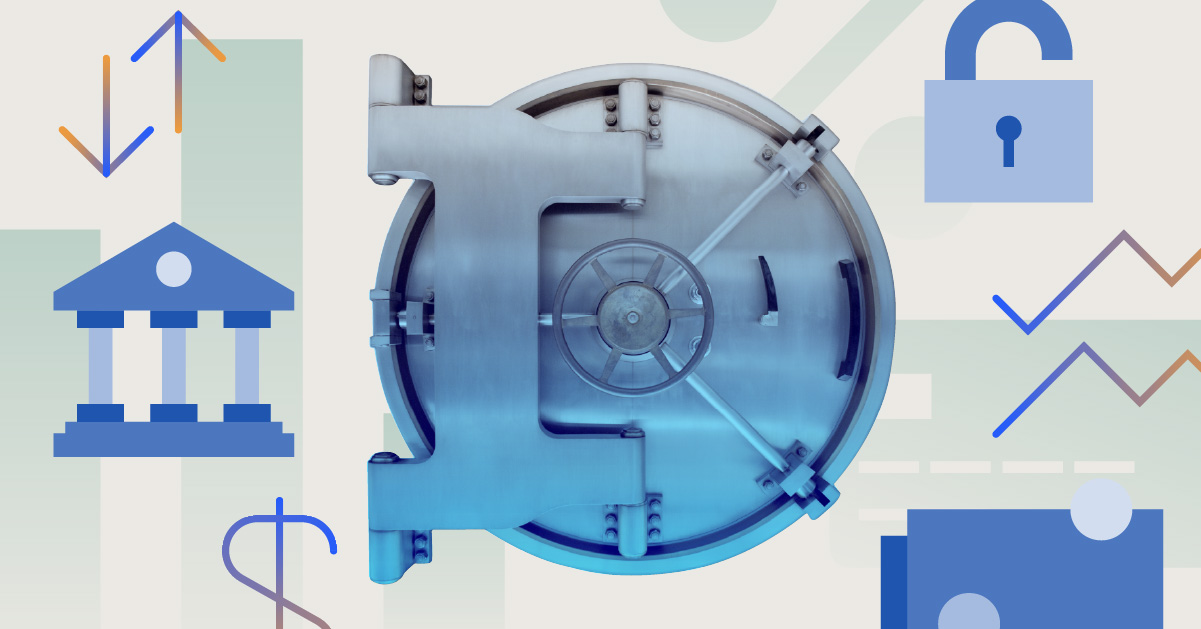Undervalued by 25% and Yielding 5%-Plus, This Wide-Moat Stock Is a Buy
This dividend stock has the wind at its back, too.

U.S. Bancorp USB is one of the largest regional banks in the United States. The shares rallied after reporting second-quarter results, yet we think they remain significantly undervalued. The bank earns a wide economic moat rating and exemplary marks for management’s adept capital allocation. The stock lands on our 10 Best Companies to Invest in Now list and is one of Morningstar chief U.S. market strategist Dave Sekera’s four stocks to buy in the third quarter. Its forward dividend yield tops 5%, too.
U.S. Bancorp has been one of the most profitable regional banks we cover. Few domestic competitors can match its operating efficiency and returns on equity over the past 15 years. The bank has national scale and a unique mix of fee-generating businesses, including payments, corporate trust, wealth management, and mortgage banking, all while avoiding investment banking. Its latest strategy has been to focus on its payments ecosystem, expand its branch footprint, and pursue new acquisitions and partnerships. While U.S. Bancorp has performed admirably, it has had a hard time further optimizing efficiency and returns while some peers seem to be gradually catching up over time.
Key Morningstar Metrics for U.S. Bancorp
- Fair Value Estimate: $53
- Star Rating: 4 Stars
- Economic Moat Rating: Wide
- Uncertainty Rating: Medium
Economic Moat Rating
We believe U.S. Bancorp’s cost advantages and switching costs have been demonstrated by its returns on tangible equity, which have consistently been superior to peers’ and in excess of an estimated cost of equity of 9% since 2001. We believe each of U.S. Bancorp’s business units is a strong performer. The core retail and wholesale banking segments by themselves would be some of the strongest core banking operations under our coverage. Payments services and corporate trust/fund services add to this core strength. U.S. Bancorp is one of the more efficient operators we cover, thanks to its traditional banking business as well as its advantageous mix of highly efficient nonbanking businesses. U.S. Bancorp’s other primary strength comes from its conservative underwriting culture. During the financial crisis, quarterly net charge-offs peaked at 2.5% of loans, while many peers saw 3% or more, sometimes for multiple quarters.
Read more about U.S. Bancorp’s moat rating.
Fair Value Estimate for U.S. Bancorp Stock
Our fair value estimate is equivalent to 2.6 times tangible book value as of March (1.9 times excluding accumulated other comprehensive income). We expect net interest income to grow 22% in 2023, driven by the strong rate environment, some additional net interest margin expansion in the first quarter, and the acquisition of Union Bank. We envision a slight decline in net interest income in 2024 as additional balance sheet growth is offset by rate cuts, and we see another decline in 2025 as a result of rate cuts. We see noninterest income increasing 12% in 2023, largely driven by the Union Bank acquisition. We project an average return on tangible equity of roughly 14%-15% through the cycle—slightly lower than what U.S. Bancorp has been able to achieve historically—compared with our estimated cost of equity of 9% for the bank.
Read more about U.S. Bancorp’s fair value estimate.
Risk and Uncertainty
We view the macroeconomic backdrop as the primary risk to the bank. U.S. Bancorp’s profitability will be materially affected by the interest-rate cycle and the effects of credit and debt cycles, all of which are not under management’s control. In addition, the bank is subject to the Federal Reserve’s annual stress test. U.S. Bancorp has a history of making smart acquisitions and securing strategic positions in attractive markets. Given the competence of management and the bank’s history, we view risks from future acquisitions as low. Outside of the rare, headline-grabbing scandals, we don’t see social risks as having a material effect on our valuation.
Read more about U.S. Bancorp’s risk and uncertainty.
U.S. Bancorp Bulls Say
- Strong fee revenue in moaty businesses, such as payments, helps insulate U.S. Bancorp from a flatter yield curve environment and drives higher returns on equity.
- The acquisition of Union Bank should provide additional revenue growth, expense synergies, and value for shareholders, differentiating U.S. Bancorp from peers.
- U.S. Bancorp’s solid underwriting history matters even more during a recession.
U.S. Bancorp Bears Say
- U.S. Bancorp does not have the same interest-rate sensitivity as peers and benefits less as rates rise.
- The bank faces stiff competition in payments, often from players with even more scale or fintech players that may be nimbler. This can threaten growth and pressure margins over time.
- U.S. Bancorp will have to build up capital over the next several years, and there is some uncertainty about how regulations may change with regard to capital requirements. Further, there are few positive earnings catalysts on the horizon. Banking may be in for a tough ride.
5 Financial Stocks to Buy After Earnings
The author or authors do not own shares in any securities mentioned in this article. Find out about Morningstar’s editorial policies.

/s3.amazonaws.com/arc-authors/morningstar/e03383eb-3d0b-4b25-96ab-00a6aa2121de.jpg)
/cloudfront-us-east-1.images.arcpublishing.com/morningstar/ECVXZPYGAJEWHOXQMUK6RKDJOM.jpg)
/cloudfront-us-east-1.images.arcpublishing.com/morningstar/KOTZFI3SBBGOVJJVPI7NWAPW4E.jpg)
/cloudfront-us-east-1.images.arcpublishing.com/morningstar/V33GR4AWKNF5XACS3HZ356QWCM.jpg)
:quality(80)/s3.amazonaws.com/arc-authors/morningstar/e03383eb-3d0b-4b25-96ab-00a6aa2121de.jpg)